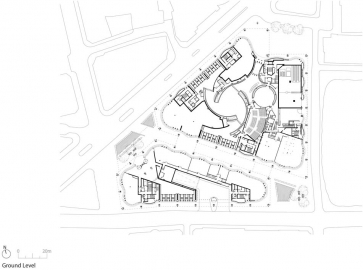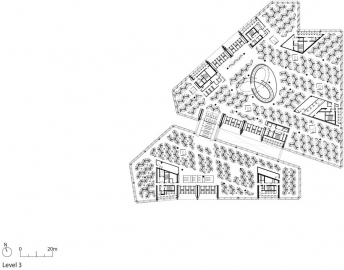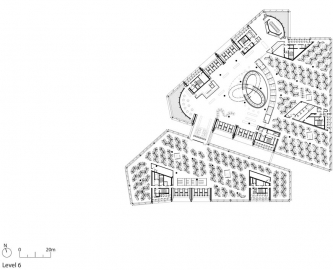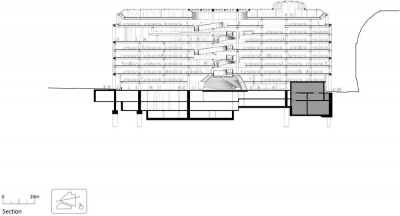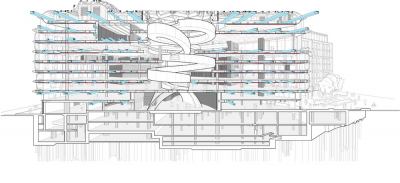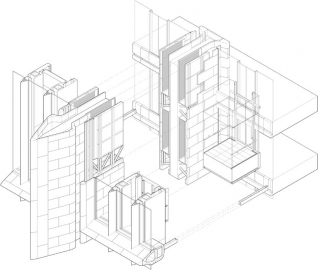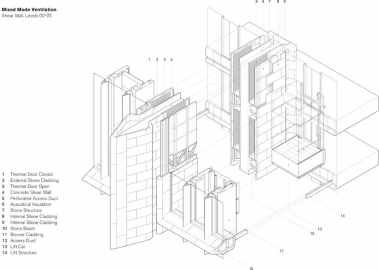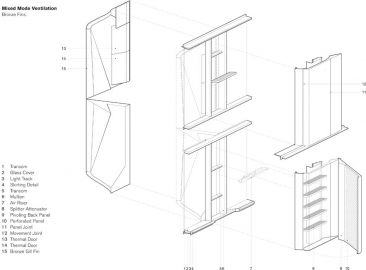Bloomberg
Bloomberg, in the heart of the City of London comprises two buildings connected by bridges that span over a new arcade, bisecting the site. The design achieved a BREEAM Outstanding rating and the highest design-stage score ever achieved by a major office development.
Bloomberg is respectful of its location in the heart of the City of London, close to the Bank of England, St. Paul’s Cathedral and the church of St. Stephen’s Walbrook. In its form, massing and materials, the new building is uniquely of its place and time – a natural extension of the City that will endure and improve the surrounding public realm. Occupying a full city block, the 3.2-acre site comprises two buildings united by bridges that span over a pedestrian arcade that reinstates Watling Street, an ancient Roman road that ran through the site. Bloomberg Arcade is now a key route for people moving around the City, with restaurants and cafes at ground level, set back behind an undulating façade under a covered colonnade. Three public plazas, located at each end of the arcade and in front of the building’s entrance, provide new civic spaces in the heart of the Square Mile.
As its first owner-occupier building, a core objective for Bloomberg was to bring its London workforce together in a single location. The building had to be an exemplar of sustainability and wellbeing in its design and operation, creating a workplace that promotes collaboration and communication to attract the best and the brightest global talent. This started with the selection of the site, which locates Bloomberg at the heart of the City of London adjacent to the main transport infrastructure network with excellent local, national and international connections.
Bloomberg is located on a significant historic site, and the challenge was to find a form, massing and materiality for the building that could respond to its sensitive setting – in particular how to deliver the quantum of accommodation required by Bloomberg while protecting key views of St Paul’s Cathedral and respecting neighbouring historic buildings. In response to the visual solidity of the adjacent buildings, Bloomberg is characterised by its deep sandstone façades with an array of inset, sculptural ‘breathing’ bronze fins that shade the floor-to-ceiling glazing and deliver natural ventilation.
The materials of the building were selected using three principal criteria. Materials that would be sympathetic to the historic setting of the building were identified, which largely resulted in the use of robust, high quality natural materials that had a self-finish and that would not only mature and improve gracefully with age, but also have lower maintenance demands.
Lifecycle and circular economy were key in the selection of materials, which are envisaged to last far longer than the theoretical lifecycle of the building, after which they could easily be recycled. Global purchasing ensured the best quality materials were sourced and, whilst transporting materials from overseas may seem carbon intensive, their robustness and longevity is projected to lead to carbon savings through minimising repair and renewal, thereby outweighing the transport emissions.
Compared to a typical office building, Bloomberg’s environmental strategies deliver a 73% saving in water consumption and a 35% saving in energy consumption and associated CO₂ emissions. Innovative power, lighting, water and ventilation systems account for the majority of energy savings.

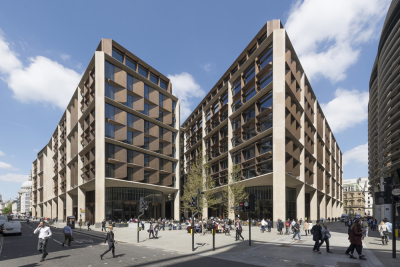 © Nigel Young
© Nigel Young
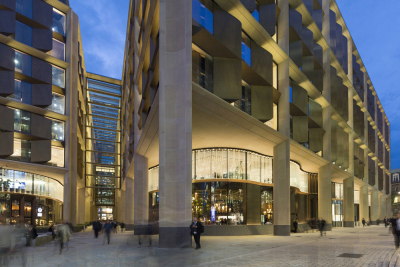 © Aaron Hargreaves
© Aaron Hargreaves
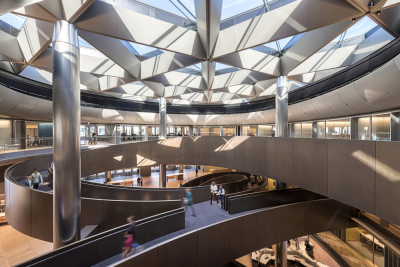 © Nigel Young
© Nigel Young
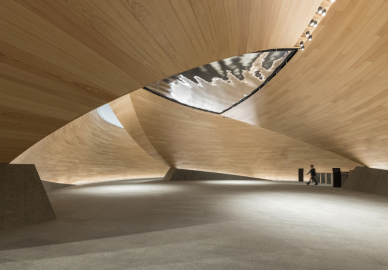 © Nigel Young
© Nigel Young
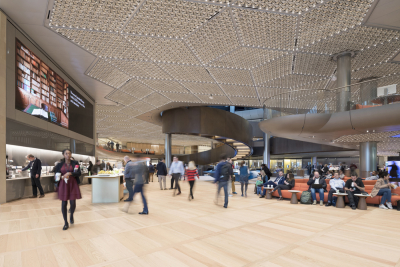 © Nigel Young
© Nigel Young
